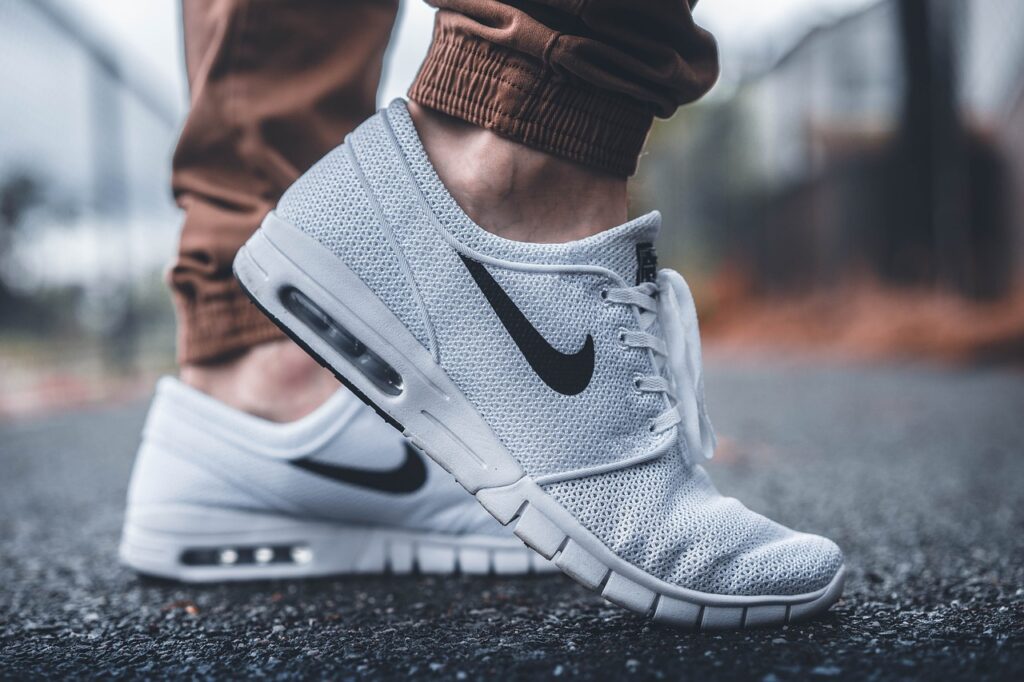
Whether you're wearing \$2 flip-flops or \$150 stilettos, shoes are meant to fit your feet. When they don't, you may experience skin lesions and other long-term problems like bunions and hammertoes.
To avoid these issues, shop for shoes later in the day when your feet are most likely to swell. Also, measure your feet yourself rather than relying on shoe size charts.
Blisters
Blisters are painful but they also can be a telltale sign that your shoes don’t fit properly. Whether they are the result of rubbing and friction from shoe rubbing, sweat from damp socks, or intense activity, blisters can be prevented by making sure your shoes fit correctly and wearing proper padding.
Wearing shoes that are too big allows the foot to slip around within the shoe, creating rubbing and friction. Shoes that are too small create rubbing against the heel and toes and can lead to foot problems such as corns, calluses, bunions and runner’s toe.
When you experience a blister, apply moleskin or duct tape to the area and avoid touching it to reduce friction. It is also important to shop for shoes in the afternoon when your feet are most likely to swell, as this will help ensure your shoes fit well throughout the day.
Ingrown Toenails
An ingrown toenail (medical term: onychocryptosis) develops when the corner of a nail curves down and digs into the skin, usually the big toe. This irritates the skin and can cause pain, redness, swelling and warmth in the toe. The condition can worsen if the nail breaks the skin, which allows bacteria to enter and cause an infection.
An over-the-counter pain reliever such as acetaminophen or ibuprofen can help reduce discomfort. Soak the foot in warm water 3-4 times a day and keep the toe dry. Trim nails straight across and avoid rounded or tapered corners.
A health care provider can remove the ingrown toenail by lifting the nail edge and placing cotton, dental floss or a splint under it. This separates the nail from the overlying skin and helps the toenail grow above the skin edge, which should occur within 2 to 12 weeks.
Calluses
We’ve all experienced blisters, but most of us chalk them up to breaking in new shoes or a result of a tough workout. However, if you find yourself getting recurrent blisters and calluses, it may be a sign that your shoes are too tight.
A callus is an area of thick skin that develops due to rubbing (friction) or pressure. They can be soft or hard and tend to form on top or between the toes.
When you wear shoes that are too small, the toes are constantly rubbing against the reduced toe box volume, which can cause painful and unsightly calluses and corns. These foot deformities can be prevented by buying a shoe that fits you correctly. The shoe should be snug in the toe area, but not so tight that it cuts off blood flow.
Bunions
While wearing shoes that are too small may contribute to bunions, they’re not the only culprit. A combination of genetics, poor foot posture and ill-fitting shoes all contribute to the development of this painful structural problem.
Bunions are bony bumps that develop at the base of your big toe joint. They occur when the bones that make up this joint change shape, causing the tip of your big toe to lean toward your other toes. Over time, this can lead to pain, swelling, corns and calluses.
Ankle Sprains
Beyond blisters, sore toenails and bunions, wearing shoes that are too small can lead to serious medical conditions such as chronic ankle instability and nerve damage. The latter is referred to as peripheral neuropathy and can be felt as pins and needles in the feet or an inability to sense where the foot is placed on the ground, known as poor proprioception.
The ankle is where three bones meet -- the tibia and fibula of the lower leg and the talus of the foot. The ankle is held together with ligaments, which are strong elastic bands of tissue. Ligament injuries -- such as sprains — occur when the ankle twists or bends into a position it is not designed to move into. Symptoms include pain around the ankle joint, swelling and bruising.





